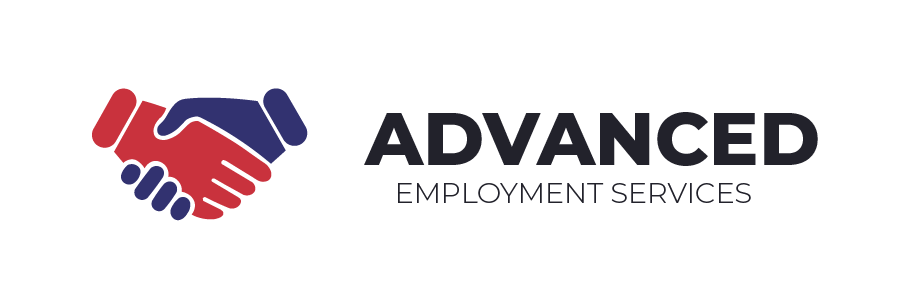Table of Contents
Workplace dynamics can make or break productivity. When communication flows and team members align, tasks get done efficiently. However, tension builds when the environment includes difficult personalities, and productivity, morale, and even employee retention can suffer. Dealing with difficult people at work is a skillset that more professionals need, especially in today’s complex work environments.
At Advanced Employment Services, we believe fostering strong workplace relationships is as critical as hiring the right candidate. This article explores why work conflict occurs, how to handle it effectively, and how employers and employees can proactively create healthier workspaces.
The Impact of Workplace Conflict
Work conflict is far more common than most people realize. According to a study by CPP Inc., publishers of the Myers-Briggs assessment, 85% of employees deal with conflict on some level, and 29% do so constantly. More alarmingly, U.S. employees spend an average of 2.8 hours per week dealing with conflict, costing businesses around $359 billion annually in lost productivity.
Whether it’s a passive-aggressive coworker, an inflexible supervisor, or a colleague who constantly criticizes, these challenges require intentional strategies to maintain professionalism and well-being.
Types of Difficult People at Work
Understanding what makes a colleague “difficult” can help you tailor your response. Here are some common types:
- The Micromanager: Oversees every minor task and trusts no one.
- The Gossip: Spreads rumors or confidential information.
- The Credit Stealer: Takes ownership of others’ ideas or results.
- The Passive-Aggressive: Uses sarcasm or subtle digs instead of direct communication.
- The Constant Complainer: Always focuses on problems, not solutions.
Each type presents unique challenges, but the result is the same: friction, miscommunication, and decreased productivity.
Why Conflict Happens
Conflict at work often stems from differences in:
- Communication styles
- Work ethics
- Personal values
- Leadership expectations
- Cultural backgrounds
Add stress, deadlines, and competition for promotions, and the stage is set for tension. The Society for Human Resource Management (SHRM) found that 58% of employees said poor communication was the cause of work conflict.
Strategies for Dealing with Difficult People at Work
Let’s explore practical, evidence-based approaches for managing challenging personalities in the workplace.
1. Stay Professional, Not Personal
Avoid taking things personally. When people act out, it’s often more about their internal struggles than their actions. Keep a neutral tone, maintain professional boundaries, and don’t retaliate.
2. Set Clear Boundaries
Be firm yet respectful. For instance, if a colleague continually unloads complaints onto you, it’s okay to say, “I understand you’re frustrated, but I’d appreciate it if we could focus on finding solutions.”
3. Document Problematic Behavior
In situations that escalate, particularly with harassment or repeated conflict, document interactions. This isn’t about revenge—it’s protection, and evidence should HR need to step in.
4. Focus on Solutions, Not Emotions
Rather than venting to coworkers, channel your energy into constructive dialogue. Use “I” statements like, “I feel overwhelmed when tasks are reassigned without notice,” instead of blaming statements.
5. Bring in a Mediator
When necessary, involve a manager or HR. Many companies offer mediation or conflict resolution resources.
The Role of Leadership in Reducing Work Conflict
Leaders and managers play a pivotal role in reducing tension. Here’s how:
- Model respectful communication
- Provide feedback in private
- Encourage inclusive decision-making
- Establish zero-tolerance policies for harassment or discrimination
- Invest in conflict resolution training
According to the Harvard Business Review, teams with emotionally intelligent leaders experience less interpersonal conflict and higher satisfaction levels.
The Cost of Ignoring Toxic Behavior
Allowing toxic behavior to fester can lead to:
- Increased turnover: 49% of workers have considered leaving a job due to workplace conflict (Randstad USA).
- Low morale: Teams affected by negative dynamics report lower engagement and creativity.
- Lost revenue: Workplace tension can slow down projects and increase absenteeism.
Organizations that prioritize healthy communication retain talent longer and boost collaboration.
Preventative Strategies: Hire and Onboard for Culture
At Advanced Employment Services, we help employers find not just qualified candidates, but ones that align with your company culture. Hiring for emotional intelligence, adaptability, and communication skills can reduce future workplace issues.
During onboarding, offer clear expectations around team dynamics, communication tools, and acceptable behavior. According to SHRM, companies that embed these expectations into their culture see 40% fewer HR disputes.
Remote Work: New Challenges, Same Conflicts
Work conflict isn’t limited to the office. Miscommunication can worsen in hybrid or remote work environments without body language cues. Set protocols for:
- Regular check-ins
- Clear written communication
- Virtual team-building
- Training in asynchronous communication
A recent McKinsey survey noted that remote workers are likelier to report feelings of isolation—a precursor to passive-aggressive interactions or disengagement.
When You’re the Difficult Person
Sometimes, the hard truth is that we might be the source of the tension. If you’ve received feedback or sensed distance from colleagues:
- Reflect on your communication style.
- Ask for honest, constructive feedback.
- Seek coaching or training to improve interpersonal skills.
Self-awareness is essential in building stronger workplace relationships. According to the World Economic Forum, emotional intelligence ranks as one of the top 10 skills needed for the future workforce.
Conflict as a Growth Opportunity
Not all conflict is destructive. Healthy conflict can foster innovation and sharpen strategies. When handled well, disagreements reveal blind spots and encourage diverse perspectives.
A report by the Project Management Institute found that organizations that train teams in conflict resolution and communication outperform their peers in employee engagement and project success.
How Advanced Employment Services Can Help
Advanced Employment Services supports employers and job seekers by facilitating professional matches built for long-term success. We understand that avoiding workplace conflict starts long before the first disagreement—it begins with hiring the right fit.
Whether you’re an employer seeking a cooperative, skilled team or a job seeker looking for a healthy culture, we’re here to help. Our approach includes:
- Pre-screening for behavioral fit
- Employer support with team management strategies
- Employee coaching resources
- Guidance for resolving workplace tension
Our mission goes beyond placement—we aim to build strong, productive teams where collaboration thrives and dealing with difficult people at work becomes the exception, not the norm.
Conclusion: Turning Conflict into Constructive Growth
No workplace is immune to conflict. But with the right tools, mindset, and professional support, teams can navigate tension with resilience. Conflict doesn’t have to be destructive. With intentional communication and emotional intelligence, it can become a catalyst for stronger teamwork and better outcomes.
If you’re struggling with team dynamics or want to improve your workplace culture, contact Advanced Employment Services today. Let us help you transform work conflict into opportunity—one strong hire at a time.



